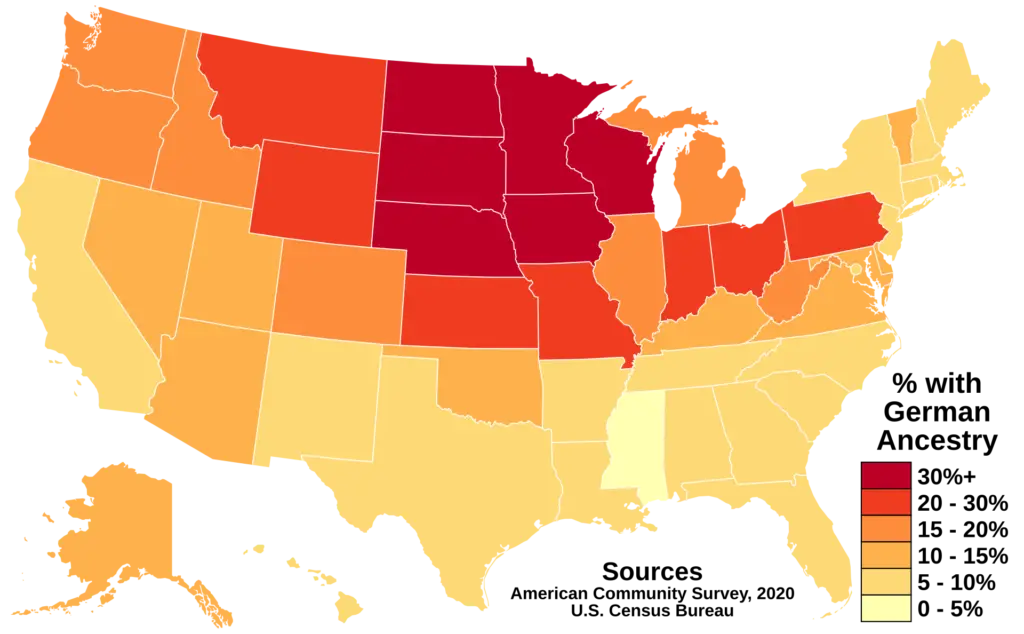Web Design for German-Americans: Bridging Culture Through Code
Designing a website for everyone often means designing for no one.
That’s especially true when you’re trying to connect with a multicultural audience like German-Americans — one of the most deeply rooted communities in the U.S.
At VOP360, we’ve worked with clients who knew they had the right product or service but just couldn’t get traction online. Why? Because their website spoke the wrong language — and not just linguistically. Cultural relevance matters.
If you’re trying to reach German speakers in the U.S., here’s what most web designs get wrong — and how to do it right.
🇩🇪 Who Are You Really Designing For?
Let’s start with the basics: Over 45 million Americans claim German heritage. Some speak the language fluently. Others were born here but grew up celebrating Oktoberfest and eating Oma’s potato salad. It’s a wide range — and your website needs to speak to all of them.
The problem?
Most websites either:
Sound like awkward Google translations, or
Ignore the cultural context altogether and go full generic
Neither works. You’re not just building a site — you’re building trust.

🎯 What Makes German-American Web Design Different?
Clean, Clear, and No Nonsense
German audiences (even in the U.S.) tend to appreciate structure, logic, and clarity. That means a clean layout, straightforward navigation, and messaging that respects their time.
“Learn more” is good.
“Unlock our exclusive suite of transformative solutions!” — not so much.
Language Matters, But So Does Tone
You don’t need to build a fully German-language site, but giving users the option is a smart move — especially if you’re selling cultural products or hosting heritage events.
Pro tip: A simple language toggle goes a long way. And if you’re translating, work with a native speaker — not an AI or plugin.
Also, keep the tone respectful and neutral. Humor and slang don’t always translate culturally or linguistically.
Tradition + Modernity = Balance
Many German-Americans value heritage but live fully modern digital lives. Your site should reflect that balance — highlight traditional themes or events, but present them in a sleek, mobile-optimized, modern format.
Think: a minimalist event calendar with Oktoberfest vibes — not a cluttered “Guten Tag!” homepage from 2005.
Practicality Over Flash
Germans are often very practical shoppers and readers. Overly animated elements, endless scrolls, or gimmicky pop-ups may distract or frustrate.
Function first. Design should support the message, not overshadow it.
🌍 Multicultural Web Design Isn’t Just a Trend
If you think of multicultural design as a checkbox, you’re missing the point. It’s about creating something that feels familiar to the user.
For German-American audiences, that might mean:
Subtle cultural cues (think: Oktoberfest-inspired textures or traditional fonts)
Authentic imagery
A privacy policy that’s easy to find — Germans care deeply about data protection
And it’s not just about design — it’s about UX too. Make sure the flow is intuitive, with no unexpected detours or “gotcha” moments.
🛠️ How to Localize a Website for German Users in the U.S.
Here’s a quick checklist:
- Use both German and English keywords in your metadata
- Incorporate cultural imagery where it makes sense
- Avoid overly salesy or vague language
- Offer bilingual options — or at least clear English with cultural references
- Be transparent about shipping, policies, and data usage
📈 Don’t Forget About SEO
Search behavior among German-Americans can be unique. People might type:
“German bakery near me”
“Oktoberfest events in Miami”
“German language website USA”
Use those phrases — and their German equivalents — in your blog content, alt tags, and product descriptions. Also, structure your pages clearly so Google can pick up the cultural context.

Final Thoughts: Build Trust, Not Just Traffic
Web design isn’t just about what looks good — it’s about what feels right to the user. And when you’re talking to a multicultural audience like German-Americans, small adjustments in tone, structure, and content can make a big difference.
If you’re trying to connect with this community — whether for business, events, or cultural engagement — don’t settle for generic design. Speak their language. Respect their values. And build a website that actually works.
Ready to localize your website?
We help brands build bridges not just pages. Let’s talk about your next digital project.




